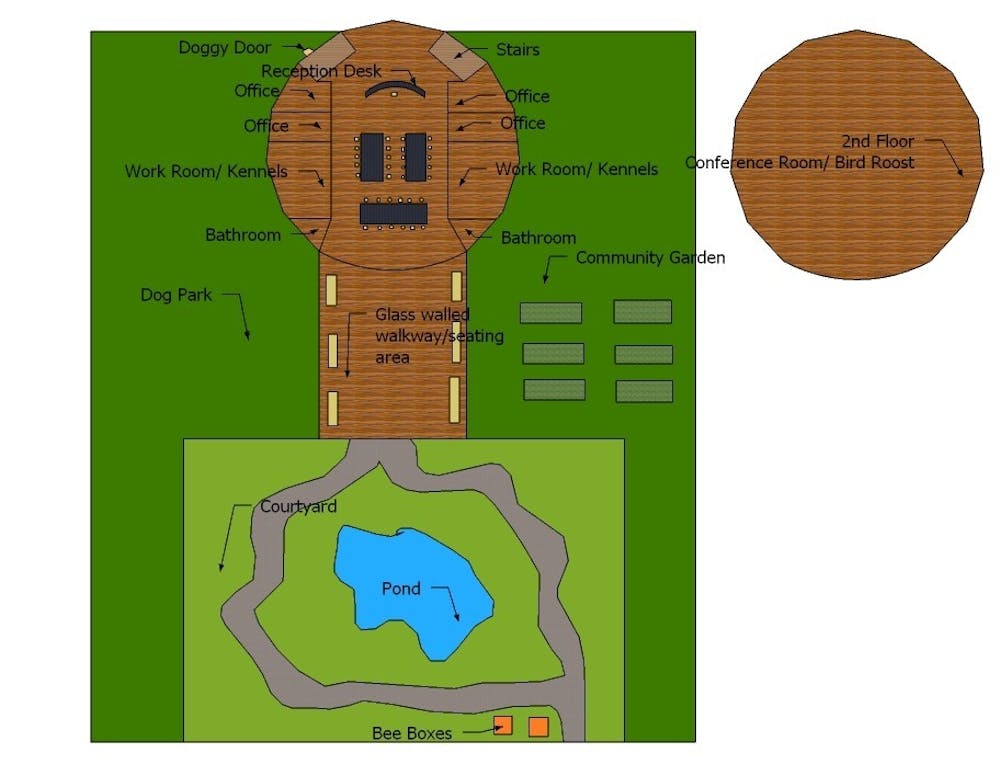One of Elon University’s top goals is turning students into global citizens. But in a world where humans represent a small percentage of total life on this planet, where do non-humans fall into this plan?
Students in Martin Fowler’s upper-level philosophy class “Animal Captivity: Zoos, Sanctuaries and Asylums” have been delving into this question since the class was first taught in Spring 2012 — and they may have recently found an answer.
It all started when senior Thomas Berry, a philosophy major who took Animal Captivity in Spring 2012, came up with the initial concept of developing a place on Elon’s campus where humans and animals can coexist symbiotically.
“Thomas had thought about this as a Leadership Fellow for a legacy project,” said Fowler, lecturer in philosophy. “I thought I would give it some legs.”
When Fowler instructed his Spring 2013 Animal Captivity class to come up with an idea to implement Berry’s proposal for their final project, the Center for Development of Interspecies Relationships (CDIR) was the outcome.
“Our class worked on CDIR for the second half of the semester,” said junior Jeff Stern, a member of the Spring 2013 class. “It was a cool project and not something I expected from a philosophy course.”
Though the plan is only in its first stages, CDIR is designed for gathering research and furthering thought and conversation related to the relations between humans and non-humans, a mission that reflects the themes of the class.
“There’s a very divided stance right now where there are humans and there are animals,” Berry said. “Humans very much see themselves as above animals and as the dominant species, but in reality, humans represent a very small portion of life on this campus.”
Berry said CDIR aims to give humans the opportunity to evaluate their relationships with non-humans and reaffirm their stance.
The class plans for CDIR to take the form of an outdoor courtyard where students, faculty and staff will be able to interact in an environment that welcomes humans, plants and animals.
“To clear up any misconceptions, people need to realize this is not a petting zoo,” Berry said. “This is a center for all life. It’s a place where you come and let go of your human-centered self and step into a world where all life is considered equally for the common good.”
But the outdoor courtyard isn’t the only plan associated with CDIR. First, the Animal Captivity class hopes to form a club that can partner with other clubs, such as Elon Volunteers or the Sierra Club, to spread the word and get students interested in CDIR.
“[The club] could perhaps segue into an on-campus living learning community where students are allowed to have non-human companions,” Berry said. “Then this idea could segue into the center itself.”
Fowler, who based the idea for Animal Captivity off concepts taught in his Environmental Ethics course, said he hopes the idea for CDIR will take root in the student body and eventually spread to Elon’s administration.
“A lot of ideas can be tried out,” Fowler said. “It’s not just one small group’s agenda. Elon will hopefully decide to identify with this idea. I don’t know exactly when it will happen, but I want to be there when it does.”
As for Berry, he said he’s frequently asked if Elon is ready for something as big as CDIR on campus.
“Well, right now, no,” he said. “But they also weren’t ready for the Numen Lumen Pavilion 10 years ago, and now it’s Elon’s maiden flagship. I think this idea just needs a little brewing and it will catch on — or walk on, crawl on, fly on.”


